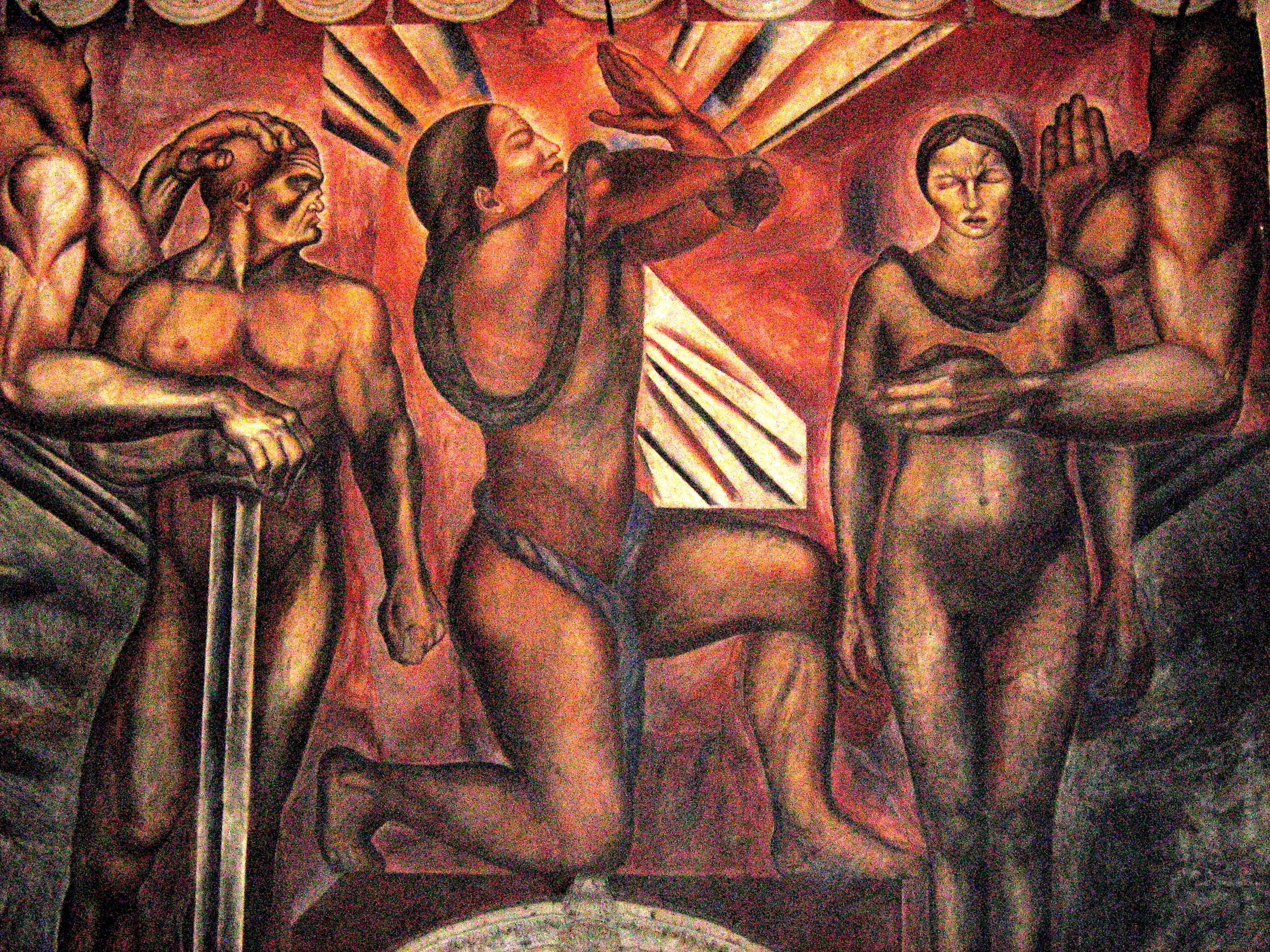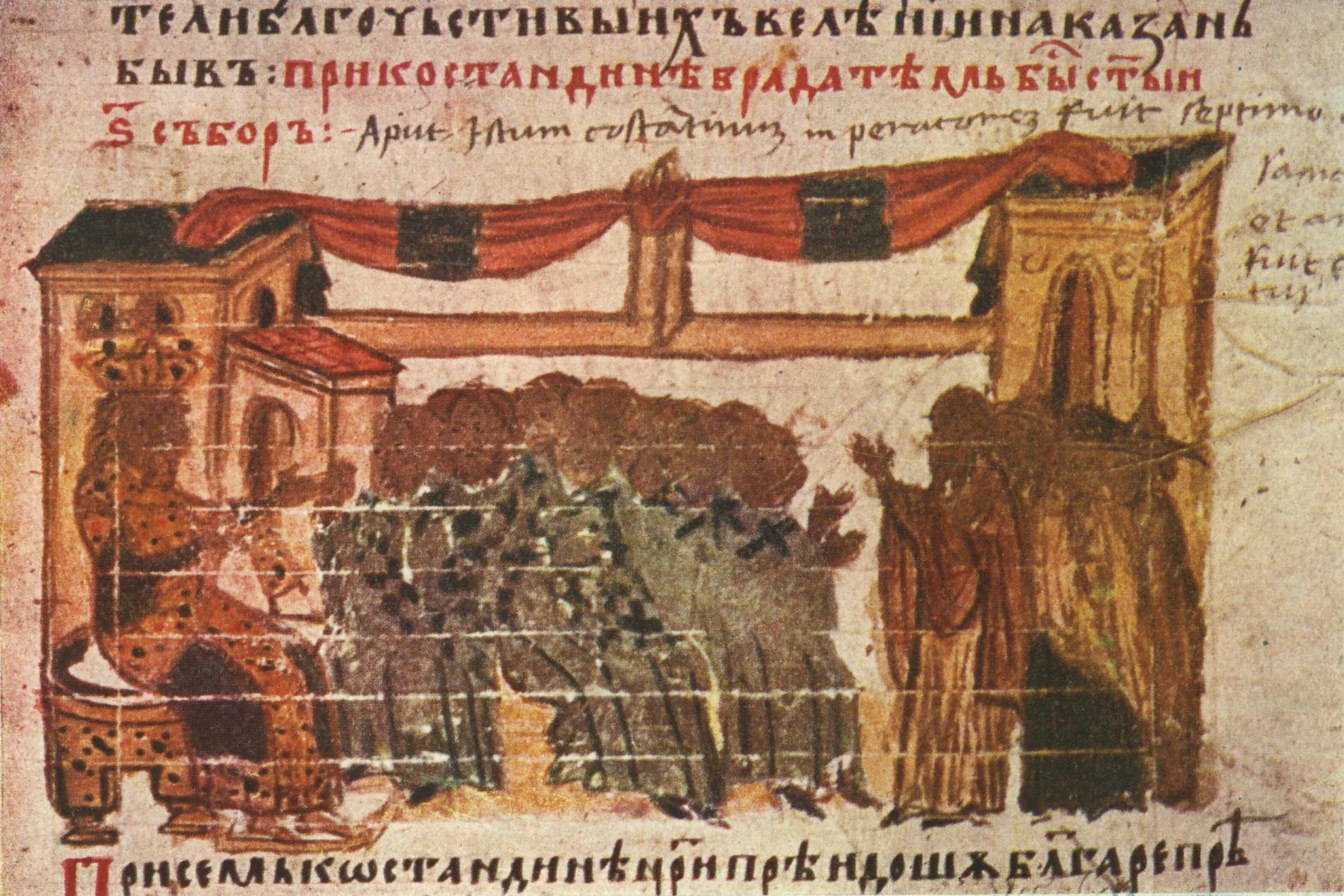|
Agnoetae
The Agnoetae (Greek ἀγνοηταί ''agnoetai'', from ἀγνοέω ''agnoeo'', to be ignorant of) or Themistians were a Monophysite Christian sect of Late Antiquity that maintained that the nature of Jesus Christ was like other men's in all respects, including limited knowledge despite being divine. The sect grew out of the dispute between Severus of Antioch and Julian of Halicarnassus concerning the nature of Christ's body. Julian held the view, termed Aphthartodocetism, that Christ's body was incorruptible from birth. The followers of Severus, the Severans, rejected this, holding that only after the Resurrection was Christ's body incorruptible. Around 534, a Severan deacon of Alexandria in Egypt, Themistius Calonymus, published his views on Christ's knowledge under the title ''Apology for Theophilus''. Although he saw himself as defending the Severan view, he ended up founding a new sect. Themistius' views were based on his exegesis of and , in which Christ appears ignoran ... [...More Info...] [...Related Items...] OR: [Wikipedia] [Google] [Baidu] |
Severus Of Antioch
Severus the Great of Antioch (Greek: Σεβῆρος; syr, ܣܘܝܪܝܘܣ ܕܐܢܛܝܘܟܝܐ), also known as Severus of Gaza or Crown of Syrians (Syriac: ܬܓܐ ܕܣܘܪܝܥܝܐ; Tagha d'Suryoye; Arabic: تاج السوريين; Taj al-Suriyyun), was the Patriarch of Antioch, and head of the Syriac Orthodox Church, from 512 until his death in 538. He is venerated as a saint in the Oriental Orthodox Church, and his feast day is 8 February. Biography Early life and education Severus was born in the city of Sozopolis in Pisidia in c. 459,Barsoum (2003), p. 92 or c. 465, into an affluent Christian family, however, later Miaphysite sources would assert that his parents were pagan.Witakowski (2004), pp. 115-116 His father was a senator in the city,Chapman (1911) and his paternal grandfather, also named Severus, [...More Info...] [...Related Items...] OR: [Wikipedia] [Google] [Baidu] |
Monophysite
Monophysitism ( or ) or monophysism () is a Christological term derived from the Greek (, "alone, solitary") and (, a word that has many meanings but in this context means "nature"). It is defined as "a doctrine that in the person of the incarnated Word (that is, in Jesus Christ) there was only one nature—the divine". Background The First Council of Nicaea (325) declared that Christ was divine (homoousios, consubstantial, of one being or essence, with the Father) and human (was incarnate and became man). In the fifth century a heated controversy arose between the sees and theological schools of Antioch and Alexandria about how divinity and humanity existed in Christ, the former stressing the humanity, the latter the divinity of Christ. Cyril of Alexandria succeeded in having Nestorius, a prominent exponent of the Antiochian school, condemned at the Council of Ephesus in 431, and insisted on the formula "one ''physis'' of the incarnate Word", claiming that any formula that ... [...More Info...] [...Related Items...] OR: [Wikipedia] [Google] [Baidu] |
Eulogius Of Alexandria
Eulogius of Alexandria ( grc-gre, Εὐλόγιος) was Greek Patriarch of that see from about 580 to 608. He is regarded as a saint, with a feast day of September 13. Life Eulogius was first igumen of the monastery of the Mother of God in Antioch. He was a successful combatant of various phases of Monophysitism.McNeal, Mark. "St. Eulogius of Alexandria." The Catholic Encyclopedia Vol. 5. New York: Robert Appleton Company, 1909. 30 Sept.ember 2021 He was a warm friend of Pope , who corresponded with him, and received from that pope many flattering expressions of esteem and admiration.E.g. Eulogius refut ... [...More Info...] [...Related Items...] OR: [Wikipedia] [Google] [Baidu] |
Greek Language
Greek ( el, label=Modern Greek, Ελληνικά, Elliniká, ; grc, Ἑλληνική, Hellēnikḗ) is an independent branch of the Indo-European family of languages, native to Greece, Cyprus, southern Italy (Calabria and Salento), southern Albania, and other regions of the Balkans, the Black Sea coast, Asia Minor, and the Eastern Mediterranean. It has the longest documented history of any Indo-European language, spanning at least 3,400 years of written records. Its writing system is the Greek alphabet, which has been used for approximately 2,800 years; previously, Greek was recorded in writing systems such as Linear B and the Cypriot syllabary. The alphabet arose from the Phoenician script and was in turn the basis of the Latin, Cyrillic, Armenian, Coptic, Gothic, and many other writing systems. The Greek language holds a very important place in the history of the Western world. Beginning with the epics of Homer, ancient Greek literature includes many works of lasting impo ... [...More Info...] [...Related Items...] OR: [Wikipedia] [Google] [Baidu] |
Catholic Encyclopedia
The ''Catholic Encyclopedia: An International Work of Reference on the Constitution, Doctrine, Discipline, and History of the Catholic Church'' (also referred to as the ''Old Catholic Encyclopedia'' and the ''Original Catholic Encyclopedia'') is an English-language encyclopedia published in the United States and designed to serve the Catholic Church. The first volume appeared in March 1907 and the last three volumes appeared in 1912, followed by a master index volume in 1914 and later supplementary volumes. It was designed "to give its readers full and authoritative information on the entire cycle of Catholic interests, action and doctrine". The ''Catholic Encyclopedia'' was published by the Robert Appleton Company (RAC), a publishing company incorporated at New York in February 1905 for the express purpose of publishing the encyclopedia. The five members of the encyclopedia's Editorial Board also served as the directors of the company. In 1912 the company's name was changed to ... [...More Info...] [...Related Items...] OR: [Wikipedia] [Google] [Baidu] |
Omniscience
Omniscience () is the capacity to know everything. In Hinduism, Sikhism and the Abrahamic religions, this is an God#General conceptions, attribute of God. In Jainism, omniscience is an attribute that any individual can eventually attain. In Buddhism, there are differing beliefs about omniscience among different schools. Etymology The word ''omniscience'' derives from the Latin word ''wikt:sciens, sciens'' ("to know" or "conscious") and the prefix ''wikt:omni, omni'' ("all" or "every"), but also means "Eye of Providence, all-seeing". In religion Buddhism The topic of omniscience has been much debated in various Indian traditions, but no more so than by the Buddhists. After Dharmakirti's excursions into the subject of pramana, what constitutes a valid cognition, Śāntarakṣita and his student Kamalaśīla thoroughly investigated the subject in the Tattvasamgraha and its commentary the Panjika. The arguments in the text can be broadly grouped into four sections: * The refut ... [...More Info...] [...Related Items...] OR: [Wikipedia] [Google] [Baidu] |
Maximus The Confessor
Maximus the Confessor ( el, Μάξιμος ὁ Ὁμολογητής), also spelt Maximos, otherwise known as Maximus the Theologian and Maximus of Constantinople ( – 13 August 662), was a Christian monk, theologian, and scholar. In his early life, Maximus was a civil servant, and an aide to the Byzantine Emperor Heraclius. He gave up this life in the political sphere to enter the monastic life. Maximus had studied diverse schools of philosophy, and certainly what was common for his time, the Platonic dialogues, the works of Aristotle, and numerous later Platonic commentators on Aristotle and Plato, like Plotinus, Porphyry, Iamblichus, and Proclus. When one of his friends began espousing the Christological position known as Monothelitism, Maximus was drawn into the controversy, in which he supported an interpretation of the Chalcedonian formula on the basis of which it was asserted that Jesus had both a human and a divine will. Maximus is venerated in both the Catholic and Ea ... [...More Info...] [...Related Items...] OR: [Wikipedia] [Google] [Baidu] |
Apollinaris Of Laodicea
Apollinaris the Younger, also known as Apollinaris of Laodicea and Apollinarius ( grc, Ἀπολινάριος; died 382) was a bishop of Laodicea in Syria. He is best known as a noted opponent of Arianism. Apollinaris's eagerness to emphasize the deity of Jesus and the unity of his person led him to deny the existence of a rational human soul in Christ's human nature. This view came to be called Apollinarism. It was condemned by the First Council of Constantinople in 381. Life He collaborated with his father, Apollinaris the Elder, in reproducing the Old Testament in the form of Homeric and Pindaric poetry and the New Testament after the fashion of Platonic dialogues, when the emperor, Julian, had forbidden Christians to teach the classics. He is best known, however, as a noted opponent of Arianism. Apollinaris's eagerness to emphasize the deity of Jesus and the unity of his person led him so far as to deny the existence of a rational human soul (νοῦς, ''nous'') in Chris ... [...More Info...] [...Related Items...] OR: [Wikipedia] [Google] [Baidu] |
Third Council Of Constantinople
The Third Council of Constantinople, counted as the Sixth Ecumenical Council by the Eastern Orthodox and Catholic Churches, as well by certain other Western Churches, met in 680–681 and condemned monoenergism and monothelitism as heretical and defined Jesus Christ as having two energies and two wills (divine and human).George Ostrogorsky, ''History of the Byzantine State'' (Rutgers University Press, 1995), 127. Background The council settled a set of theological controversies that went back to the sixth century but had intensified under the emperors Heraclius () and Constans II (). Heraclius had set out to recover much of the part of his empire lost to the Persians and had attempted to bridge the controversy with monophysitism, which was particularly strong in Syria and Egypt, by proposing a moderate theological position that had as good support in the tradition as any other. The result was first monoenergism, i.e. that Christ, though existing in two natures (divine and h ... [...More Info...] [...Related Items...] OR: [Wikipedia] [Google] [Baidu] |
Lateran Council Of 649
The Lateran Council of 649 was a synod held in the Basilica of St. John Lateran to condemn Monothelitism, a Christology espoused by many Eastern Christians. The Council did not achieve ecumenical status in either East or West, but represented the first attempt of a pope to convene an ecumenical council independent of the Roman emperor. According to Andrew Ekonomou, the irony of the council was that the denunciation of the theology of Constantinople came from the "collaboration of a Greco-Palestinian pope and a Constantinopolitan monk employing a style of theological discourse whose tradition was purely Eastern." Although Pope Martin I and Maximus the Confessor were abducted by Constans II and tried in Constantinople for their role in the council (Martin I being replaced as pope before dying in exile), their position was ultimately endorsed by the Third Council of Constantinople in 680. Planning Most members of the contemporary Roman clergy would have been too uneducated in theol ... [...More Info...] [...Related Items...] OR: [Wikipedia] [Google] [Baidu] |
Sophronius Of Jerusalem
Sophronius ( grc-gre, Σωφρόνιος; ar, صفرونيوس; c. 560 – March 11, 638), called Sophronius the Sophist, was the Patriarch of Jerusalem from 634 until his death. He is venerated as a saint in the Eastern Orthodox and Catholic Churches. Before rising to the primacy of the see of Jerusalem, he was a monk and theologian who was the chief protagonist for orthodox teaching in the doctrinal controversy on the essential nature of Jesus and his volitional acts. Travels Sophronius was born in Damascus around 560. He has been claimed to be of Byzantine Greek or Syriac descent. A teacher of rhetoric, Sophronius became an ascetic in Egypt about 580 and then entered the monastery of St. Theodosius near Bethlehem. Traveling to monastic centres in Asia Minor, Egypt, and Rome, he accompanied the Byzantine chronicler St. John Moschus, who dedicated to him his celebrated tract on the religious life, ''Spiritual Meadow'' (and whose feast day in the Byzantine Rite, , is shared wit ... [...More Info...] [...Related Items...] OR: [Wikipedia] [Google] [Baidu] |






